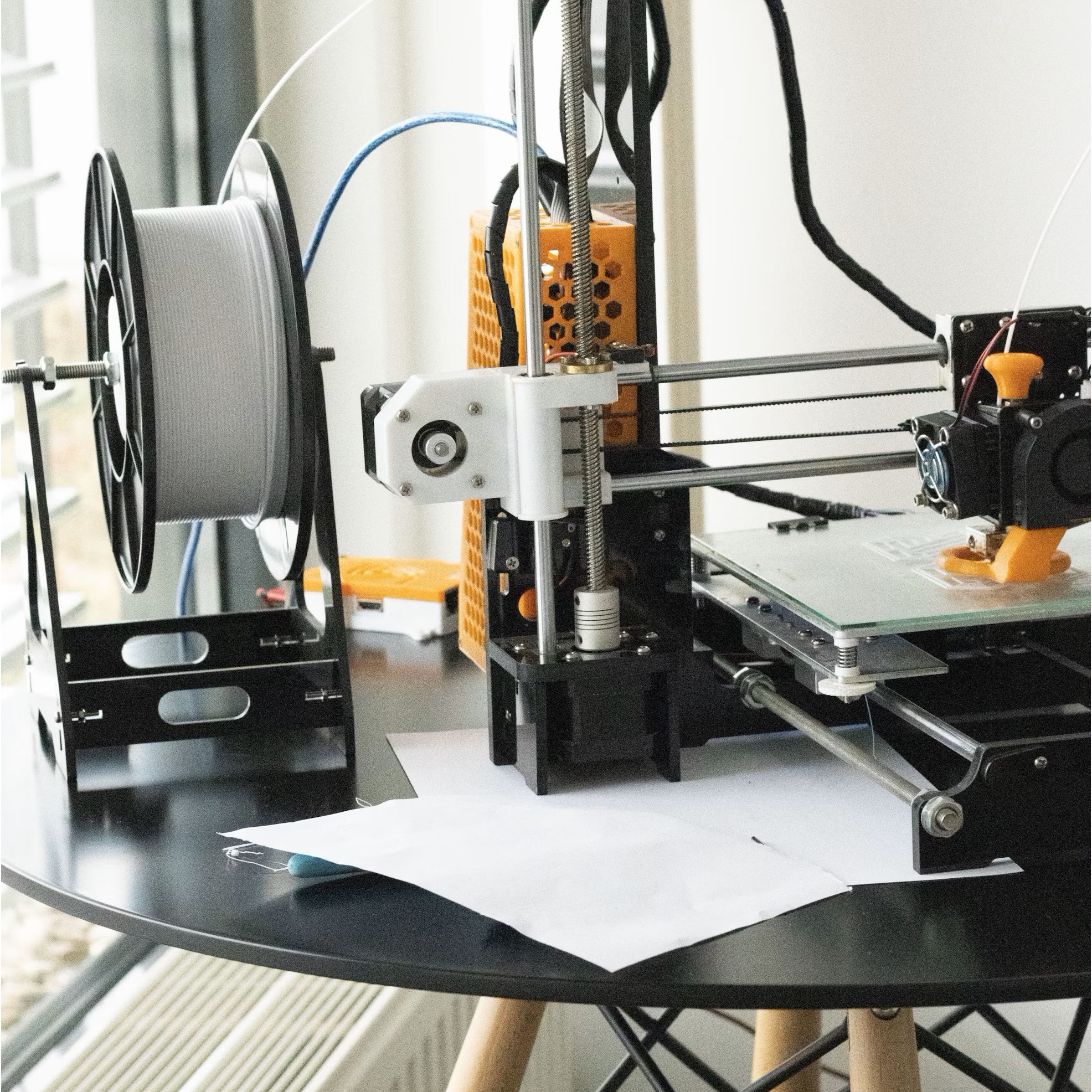
Introduction to 3D Printing: Everything You Need to Know
3D printing has revolutionized the manufacturing industry, enabling the creation of objects layer by layer from digital models. This technology has not only transformed how products are made but also how they are designed, tested, and customized. In this blog post, we provide a comprehensive overview of 3D printing, explain the different printing technologies, and show how you can benefit from a professional 3D printing service.
What is 3D Printing?
3D printing, also known as additive manufacturing, is a manufacturing process that creates a physical object from a digital model. Unlike traditional manufacturing methods that remove or shape material (subtractive manufacturing), 3D printing adds material layer by layer to form the desired object. This offers numerous advantages, including the ability to create complex geometries without additional effort.
How Does 3D Printing Work?
The 3D printing process starts with the creation of a 3D model. This model is often saved in STL or OBJ format, as these formats are widely used for 3D printing. The digital model is then converted into G-code using specialized software known as a Slicer. The slicer calculates how the object will be built layer by layer and generates a file in G-code format that the 3D printer can understand and execute.
The G-code contains precise instructions for the 3D printer, including where and how to deposit material, the speed of printing, the nozzle temperature, and the movements of the print head. Once the G-code is generated, it is sent to the 3D printer, which constructs the object layer by layer.
Advantages of 3D Printing
- Design Freedom: 3D printing allows for the creation of highly complex geometries that would be difficult or impossible to achieve with traditional manufacturing methods. This is particularly beneficial in product development and prototyping.
- Speed: 3D printing significantly accelerates the production process. Prototypes can be created in hours instead of weeks, reducing time to market.
- Cost Efficiency: Especially for small production runs and prototypes, 3D printing can be more cost-effective than traditional manufacturing techniques that require expensive tooling.
- Personalization: 3D printing enables the customization of products, making it ideal for personalized items or tailor-made solutions.
- Sustainability: Since 3D printing uses only the material necessary for production, it generates less waste. Many 3D printing materials are also recyclable or made from sustainable sources.
Applications of 3D Printing
3D printing is used across various industries today, from automotive to healthcare, architecture, and fashion. Here are some common applications:
- Prototyping: Companies use 3D printing to quickly and affordably create prototypes. This helps identify design flaws early and improve the product before mass production.
- Healthcare: In medicine, 3D printing is used to produce custom prosthetics, implants, and surgical models. These products can be tailored to the specific needs of a patient.
- Automotive: Automakers use 3D printing to prototype and manufacture parts. It’s also a practical solution for producing replacement parts or small series of components.
- Construction: 3D printing is increasingly used in construction to print buildings and structures. This could lead to cost-effective and fast housing solutions in the future.
- Fashion: Designers are experimenting with 3D printing to create clothing, accessories, and footwear with unique designs and structures.
How You Can Benefit from a 3D Printing Service
If you have a business or project that relies on 3D printing but don’t want to invest in your own 3D printers, a professional 3D printing service could be the solution. Here are some of the benefits you can gain by working with a 3D printing service:
- Access to High-Quality Technology: A professional 3D printing service offers access to state-of-the-art machines and materials suitable for most applications.
- Expertise and Guidance: An experienced 3D printing provider can help you choose the right material and printing technology for your project.
- Speed and Efficiency: By using a 3D printing service, you can complete projects faster and more efficiently without dealing with the technical details of the printing process.
- Cost-Effectiveness: Instead of investing in expensive equipment, you can rely on a service that only charges for printing the object.
Conclusion
3D printing has the potential to transform almost every industry. With the ability to produce complex objects quickly, affordably, and in a customized manner, it’s no surprise that more and more businesses and individuals are discovering the technology. If you’re looking to get started with 3D printing, a professional 3D printing service is an excellent way to unlock the full potential of this groundbreaking technology.
Do you want to learn more about 3D printing or start a project? Contact us today for a consultation and a tailor-made 3D printing service!
3D printing has revolutionized the manufacturing industry, enabling the creation of objects layer by layer from digital models. This technology has not only transformed how products are made but also how they are designed, tested, and customized. In this blog post, we provide a comprehensive overview of 3D printing, explain the different printing technologies, and show how you can benefit from a professional 3D printing service.
What is 3D Printing?
3D printing, also known as additive manufacturing, is a manufacturing process that creates a physical object from a digital model. Unlike traditional manufacturing methods that remove or shape material (subtractive manufacturing), 3D printing adds material layer by layer to form the desired object. This offers numerous advantages, including the ability to create complex geometries without additional effort.
How Does 3D Printing Work?
The 3D printing process starts with the creation of a 3D model. This model is often saved in STL or OBJ format, as these formats are widely used for 3D printing. The digital model is then converted into G-code using specialized software known as a Slicer. The slicer calculates how the object will be built layer by layer and generates a file in G-code format that the 3D printer can understand and execute.
The G-code contains precise instructions for the 3D printer, including where and how to deposit material, the speed of printing, the nozzle temperature, and the movements of the print head. Once the G-code is generated, it is sent to the 3D printer, which constructs the object layer by layer.
Advantages of 3D Printing
- Design Freedom: 3D printing allows for the creation of highly complex geometries that would be difficult or impossible to achieve with traditional manufacturing methods. This is particularly beneficial in product development and prototyping.
- Speed: 3D printing significantly accelerates the production process. Prototypes can be created in hours instead of weeks, reducing time to market.
- Cost Efficiency: Especially for small production runs and prototypes, 3D printing can be more cost-effective than traditional manufacturing techniques that require expensive tooling.
- Personalization: 3D printing enables the customization of products, making it ideal for personalized items or tailor-made solutions.
- Sustainability: Since 3D printing uses only the material necessary for production, it generates less waste. Many 3D printing materials are also recyclable or made from sustainable sources.
Applications of 3D Printing
3D printing is used across various industries today, from automotive to healthcare, architecture, and fashion. Here are some common applications:
- Prototyping: Companies use 3D printing to quickly and affordably create prototypes. This helps identify design flaws early and improve the product before mass production.
- Healthcare: In medicine, 3D printing is used to produce custom prosthetics, implants, and surgical models. These products can be tailored to the specific needs of a patient.
- Automotive: Automakers use 3D printing to prototype and manufacture parts. It’s also a practical solution for producing replacement parts or small series of components.
- Construction: 3D printing is increasingly used in construction to print buildings and structures. This could lead to cost-effective and fast housing solutions in the future.
- Fashion: Designers are experimenting with 3D printing to create clothing, accessories, and footwear with unique designs and structures.
How You Can Benefit from a 3D Printing Service
If you have a business or project that relies on 3D printing but don’t want to invest in your own 3D printers, a professional 3D printing service could be the solution. Here are some of the benefits you can gain by working with a 3D printing service:
- Access to High-Quality Technology: A professional 3D printing service offers access to state-of-the-art machines and materials suitable for most applications.
- Expertise and Guidance: An experienced 3D printing provider can help you choose the right material and printing technology for your project.
- Speed and Efficiency: By using a 3D printing service, you can complete projects faster and more efficiently without dealing with the technical details of the printing process.
- Cost-Effectiveness: Instead of investing in expensive equipment, you can rely on a service that only charges for printing the object.
Conclusion
3D printing has the potential to transform almost every industry. With the ability to produce complex objects quickly, affordably, and in a customized manner, it’s no surprise that more and more businesses and individuals are discovering the technology. If you’re looking to get started with 3D printing, a professional 3D printing service is an excellent way to unlock the full potential of this groundbreaking technology.
Do you want to learn more about 3D printing or start a project? Contact us today for a consultation and a tailor-made 3D printing service!




